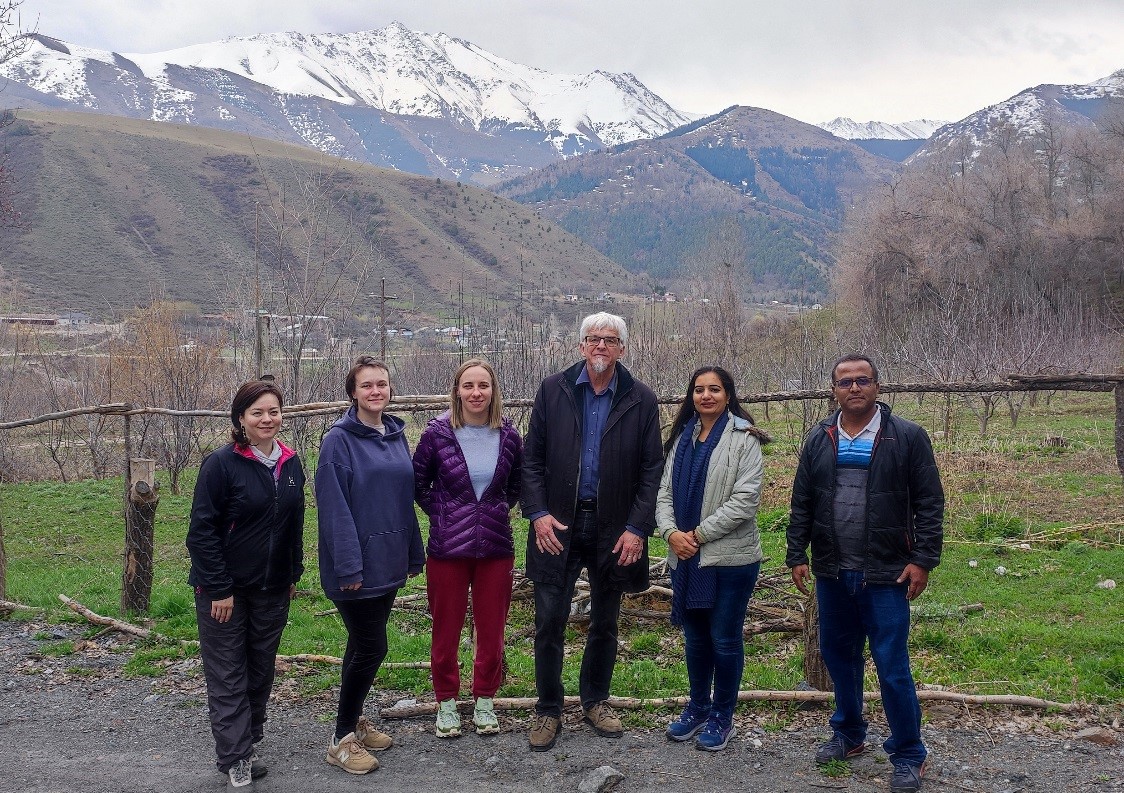We welcome you to the official site of the Research Station of the Russian Academy of Sciences in Bishkek city.
Federal State Budget Institution of Science Research Station of the Russian Academy of Sciences in Bishkek city is the research organization subordinated to the Ministry of Science and Higher Education of the Russia Federation.
The Research Station of RAS engages 57 scientific workers, including 26 researchers, 2 Doctors of Sciences and 8 Candidates of Sciences among them. The overall staff amounts 133 employees.
RS RAS
Happy Russia Day!

The national holiday of the Russian Federation has been celebrated annually since 1992 to commemorate the adoption of the Declaration of State Sovereignty of the Russian Soviet Federative Socialist Republic (RSFSR) on 12 June 1990.
Celebration of the 80th Anniversary of Victory in the Great Patriotic War
On May 7-8-9, 2025, the staff of the Research Station of the Russian Academy of Sciences in Bishkek city (RS RAS) solemnly celebrated the 80th anniversary of Victory in the Great Patriotic War!

In honor of this significant date, we jointly created a Garden of Memory on the territory of the Scientific Station: we purchased 50 seedlings of fruit trees, planted them, and installed a memorial plaque. A ceremonial meeting was held on this occasion, which was attended by almost all the employees.
The deputy director gave a speech about the upcoming holiday and the events held and thanked everyone for their active participation in the festive events. Together we happily sang "Katyusha", perhaps the most beloved song of war time. All the planted seedlings - apple trees, pears, cherries have already sprouted.

Happy Victory Day!

XVII International Conference of Young Scientists and Students "Modern Equipment and Technologies in Scientific Research" - 2025

International scientific seminar within the framework of international Project RSF-DST No. 24-47-02016 implementation
From March, 31 to April, 11, 2025, an international scientific seminar is being held at the Research Station of the Russian Academy of Sciences in Bishkek cith (RS RAS) as a part of joint international project RSF-DST No. 24-47-02016 "Deep geoelectric structure of the Shillong plateau and adjacent seismically active areas (northeastern India) based on magnetotelluric data". The purpose of the seminar is to discuss the scientific results and field data of magnetotelluric studies obtained during the project in 2024 and in the first quarter of 2025.
The seminar is attended by Russian and Indian geophysicists representing the Center for Geoelectromagnetic Research of the Institute of Physics of the Earth of the Russian Academy of Sciences - a branch of the Schmidt Institute of Physics of the Earth of the Russian Academy of Sciences (CGEMI IPE RAS, Moscow, Russia), the Research Station of the Russian Academy of Sciences in Bishkek (RS RAS, Bishkek, Kyrgyzstan) and the National Geophysical Research Institute of the Council of Scientific and Industrial Research (CSIR-NGRI) Hyderabad, India).
The seminar included sessions at which the main executors of the joint Russian-Indian project RSF-DST No. 24-47-02016 "Deep geoelectric structure of the Shillong plateau and adjacent seismically active territories (NE India) based on magnetotelluric sounding data" made a reports: Dr. A. Rybin, PhD candidate A. Ionicheva, PhD candidate T. Rodina, PhD candidate K. Nepeina, Dr. Devi А. and Mr. Babu N.
The participants of the RSF-DST project presented the results obtained during its implementation on the collection, processing and analysis of field magnetotelluric sounding data in the Shillong plateau study area (northeastern India), as well as preliminary results of the analysis of magnetotelluric monitoring records carried out in the Northern Tien Shan territory.
The employees of the Laboratory of Deep Magnetotelluric Studies of RS RAS took an active part in the seminar. During the seminar, master classes were held on the organization of field measurements and modern methods of processing and analyzing field geophysical materials. The participants of the seminar had the opportunity to present their approaches and results of processing and analyzing magnetotelluric data. Two field excursions were also held: a visit to the magnetotelluric monitoring point of the RS RAS "Aksu" (Head DMTS D. Chernenko) and a visit to the regime geophysical station of the RAS NS "Kegety".
The seminar became an important platform for the exchange of experience and knowledge between Russian and Indian scientists, for training and advanced training of young researchers from our countries. We thank all the participants of the seminar for interesting reports and speeches, fruitful and informal discussion of the issues considered, which gives a small but real contribution to the development of international scientific cooperation!

More Articles...
- XVII International Conference of Young Scientists and Students "MODERN EQUIPMENT AND TECHNOLOGIES IN SCIENTIFIC RESEARCH"
- Happy Women's Day
- XVII International Conference of Young Scientists and Students "MODERN EQUIPMENT AND TECHNOLOGIES IN SCIENTIFIC RESEARCH"
- The most important scientific results of RS RAS for 2024
Page 1 of 42






